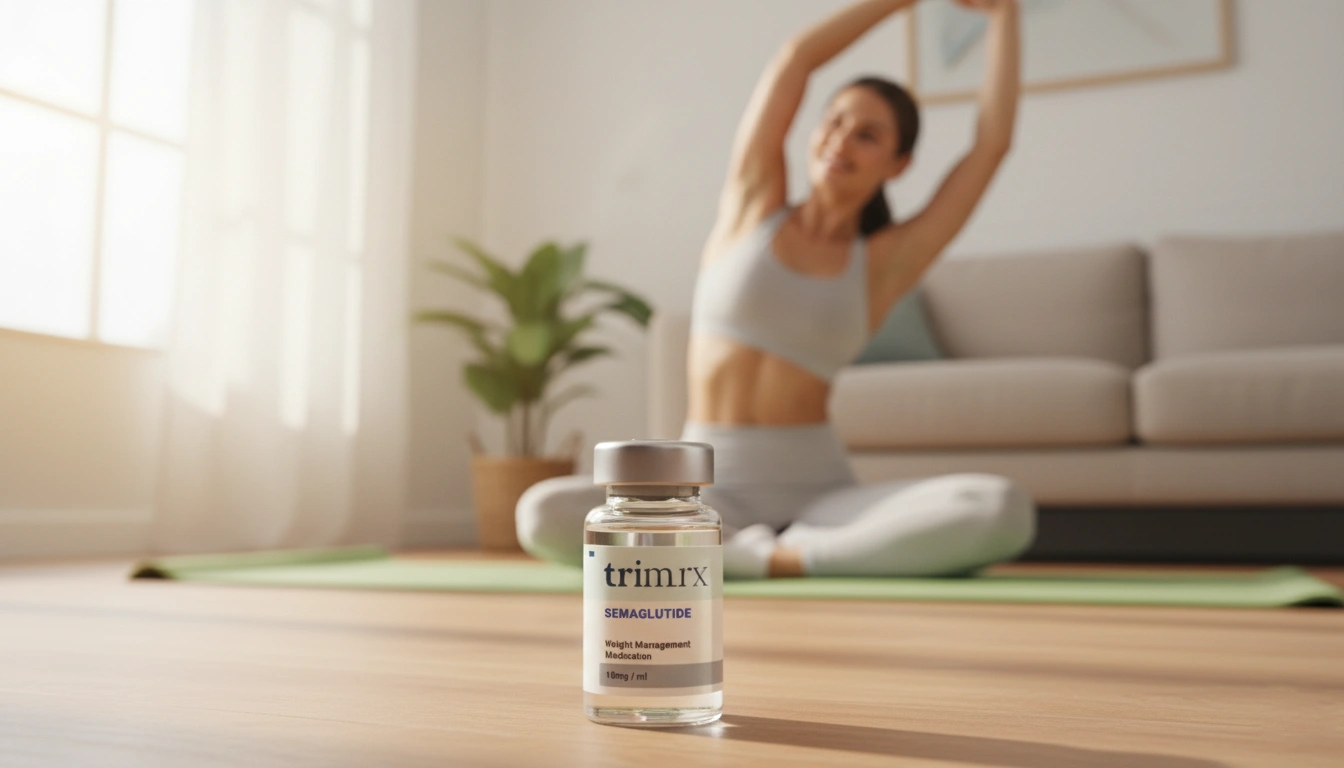Why Does My Semaglutide Injection Site Itch? Understanding Injection Site Reactions

Experiencing an itchy injection site can be a frustrating part of managing your weight loss journey with Semaglutide. Have you ever wondered why this happens? You’re not alone; countless individuals on similar journeys frequently inquire about the discomfort associated with their injections.
Semaglutide, a glucagon-like peptide-1 (GLP-1) receptor agonist, has gained popularity for its role in weight loss and blood sugar management, particularly for individuals with type 2 diabetes. Yet, as effective as it is, some users report side effects, particularly at the injection site. In this blog post, we will delve into the reasons behind injection site itchiness, explore how to manage it, and provide insights into the best practices for using Semaglutide.
We invite you to join us as we explore this essential aspect of your weight loss journey. By the end of this post, you will have a comprehensive understanding of why your injection site might itch and how to address it effectively.
Introduction
Did you know that nearly 80% of individuals using injectable medications experience some form of injection site reaction? This statistic highlights how common it is to feel discomfort after injections, including those of Semaglutide. As we navigate our weight loss journeys together, understanding the nuances of medication use becomes paramount.
Injection site reactions can manifest in various ways, from mild redness and swelling to itching and discomfort. For many, these reactions add an additional layer of complexity to managing their treatment. At TrimRx, we emphasize a supportive and personalized approach to weight loss, combining cutting-edge telehealth innovations with effective solutions. Our goal is to help you embrace healthier lifestyles in a user-friendly and medically supervised environment.
In this blog post, we will cover:
- Common causes of itching at the injection site
- Differences between normal reactions and allergic responses
- Tips for managing injection site discomfort
- The importance of proper injection technique
- When to contact your healthcare provider
By addressing these key areas, we aim to empower you with knowledge and practical strategies to enhance your experience with Semaglutide.
Common Causes of Itching at the Injection Site
Understanding the reasons behind injection site itching can help demystify the experience and ease any concerns. The primary causes can generally be categorized into the following:
1. Injection Site Reactions
When you inject Semaglutide, the needle punctures the skin, leading to a localized reaction. This can include:
- Redness: A common response as blood vessels dilate to increase blood flow to the area.
- Swelling: This can occur as the body responds to the perceived injury.
- Itching: Often linked to the body’s healing process, itching can arise as nerves in the area react to the injection.
These reactions are typically mild and resolve within a few days. It’s important to note that while these symptoms can be uncomfortable, they are generally not a cause for concern.
2. Immune Response
In some cases, the body’s immune system may respond to the injection. This immune reaction might manifest as:
- Localized Inflammation: The area may appear red and feel warm to the touch.
- Itching: This can be a sign that your immune system is reacting to the medication.
While these symptoms can feel alarming, they are often temporary and can subside as your body adjusts to the medication.
3. Allergic Reaction
Allergic reactions to medications can occur, though they are less common. Symptoms may include:
- Severe Itching: Accompanied by hives or a rash.
- Swelling: Particularly around the face, lips, or throat.
- Difficulty Breathing: This requires immediate medical attention.
If you notice any of these more severe symptoms, it’s crucial to contact your healthcare provider right away.
4. Injection Technique
Improper injection technique can also contribute to discomfort and itching. Factors to consider include:
- Needle Size: Using a needle that is too large for the injection site can increase irritation.
- Injection Site Rotation: Consistently injecting in the same area may lead to tissue damage or lipohypertrophy (thickening of fat tissue), making subsequent injections more uncomfortable.
5. Skin Sensitivity
Some individuals naturally have more sensitive skin, which can react more strongly to injections. Factors that might contribute to skin sensitivity include:
- Pre-existing Skin Conditions: Conditions such as eczema or psoriasis can exacerbate injection site reactions.
- Environmental Factors: Exposure to harsh soaps, lotions, or allergens may increase sensitivity.
By understanding these common causes, you can better navigate the side effects of Semaglutide injections and take proactive steps to mitigate discomfort.
Managing Injection Site Discomfort
If you experience itching or discomfort at your injection site, there are several strategies you can employ to alleviate these symptoms:
1. Apply a Cold Compress
Using a cold compress or a clean, damp cloth can help soothe itching and reduce swelling. Apply the compress to the area for 10-15 minutes after your injection.
2. Use Gentle Skincare Products
Opt for fragrance-free moisturizers or creams to help alleviate dryness or irritation around the injection site. Be sure to apply products gently and avoid rubbing the area.
3. Rotate Injection Sites
To prevent irritation and tissue damage, it is essential to rotate your injection sites. This practice promotes effective absorption and minimizes discomfort.
4. Maintain Proper Hygiene
Ensuring that the injection site and your hands are clean before administering the injection can help reduce the risk of infection and irritation.
5. Over-the-Counter Treatments
If itching persists, consider using over-the-counter antihistamines or topical treatments after consulting with your healthcare provider. Always check with your provider before introducing new medications.
6. Monitor Your Reactions
Keeping track of your injection site reactions can help you identify patterns and inform your healthcare provider about your experiences. Documenting when and where you inject can assist in determining if certain areas are more prone to irritation.
By employing these strategies, you can effectively manage injection site discomfort and continue your weight loss journey with Semaglutide confidently.
The Importance of Proper Injection Technique
Proper injection technique is crucial for minimizing side effects and ensuring effective medication delivery. Here are some key tips for administering your Semaglutide injection:
1. Choose the Right Site
Common injection sites include the abdomen, thigh, or upper arm. Ensure that you rotate these sites to reduce irritation and promote effective absorption.
2. Clean the Area
Before injecting, clean the area with an alcohol swab to minimize the risk of infection.
3. Pinch the Skin
Gently pinch the skin at the injection site to create a fold. This technique can help ensure that the needle is inserted into the fatty tissue, reducing discomfort.
4. Insert the Needle at the Correct Angle
Insert the needle at a 90-degree angle for most injection sites. This ensures that the medication is delivered into the appropriate tissue.
5. Inject Slowly
Administer the medication slowly to minimize discomfort and allow for better absorption.
6. Dispose of Needles Properly
Always dispose of used needles in a designated sharps container to ensure safety and prevent injury.
By following these guidelines, you can enhance your injection experience and reduce the likelihood of adverse reactions.
When to Contact Your Healthcare Provider
While most injection site reactions are mild and resolve on their own, it is essential to be vigilant about your symptoms. You should contact your healthcare provider if you experience:
- Severe or Persistent Itching: If itching lasts for more than a few days or becomes unbearable.
- Swelling or Redness: That does not subside after a short period.
- Signs of Infection: Such as pus, increased warmth, or fever.
- Allergic Reactions: Including difficulty breathing or swelling of the face, lips, or throat.
Your healthcare provider is there to support you and can provide guidance on managing your symptoms effectively.
Conclusion
Navigating the journey of weight loss with Semaglutide can be both rewarding and challenging. Understanding why your Semaglutide injection site itches is an essential aspect of this journey. From normal injection site reactions to potential allergic responses, we’ve explored the various factors that contribute to this common concern.
By implementing effective management techniques and ensuring proper injection practices, you can minimize discomfort and focus on achieving your health and weight loss goals. Remember, at TrimRx, we are committed to providing you with personalized, medically supervised care to help you embrace a healthier lifestyle.
If you’re interested in exploring our personalized weight loss programs that include Semaglutide, we encourage you to take our free assessment quiz to determine your eligibility for our prescription weight loss medications. Click here to start your journey: Take the Free Assessment Quiz.
Additionally, consider our quick-access supplements to support your weight loss journey, such as the GLP-1 Daily Support and Weight Loss Boost to enhance your overall wellness during this process.
FAQ
Is it normal for my injection site to itch after using Semaglutide?
Yes, mild itching at the injection site is a common reaction and is usually not a cause for concern. It typically resolves within a few days.
How can I manage itching at the injection site?
You can apply a cold compress, use gentle skincare products, rotate injection sites, and maintain proper hygiene to manage itching.
What should I do if I experience severe itching or other concerning symptoms?
If you experience severe itching, swelling, or signs of an allergic reaction, contact your healthcare provider immediately for guidance.
Can I continue using Semaglutide if I have injection site reactions?
Most injection site reactions are mild. However, if symptoms persist or worsen, consult your healthcare provider to discuss your treatment options.
How can I ensure proper injection technique?
Choose the right injection site, clean the area, pinch the skin, insert the needle at the correct angle, and inject slowly. Proper technique can help minimize discomfort.
By understanding the reasons behind injection site itchiness and implementing effective management strategies, you can enhance your experience with Semaglutide and continue your path toward a healthier lifestyle.

Transforming Lives, One Step at a Time
Keep reading
Navigating Your Journey: What Is a Good Maintenance Dose of Semaglutide for Lasting Results?
Wondering “what is a good maintenance dose of semaglutide”? Discover how to sustain your weight loss effectively with personalized dosing strategies, lifestyle tips, and expert support. Get started today!
Sustaining Success: What is the Semaglutide Maintenance Dose and Why it Matters
Curious about what is the semaglutide maintenance dose? Discover how it helps sustain weight loss & prevent regain. Get expert insights for lasting results!
Optimal Semaglutide Dosing for Your Weight Loss Journey
Curious what is full dose of semaglutide? Discover how this powerful medication is dosed for weight management and type 2 diabetes. Get personalized insights!



